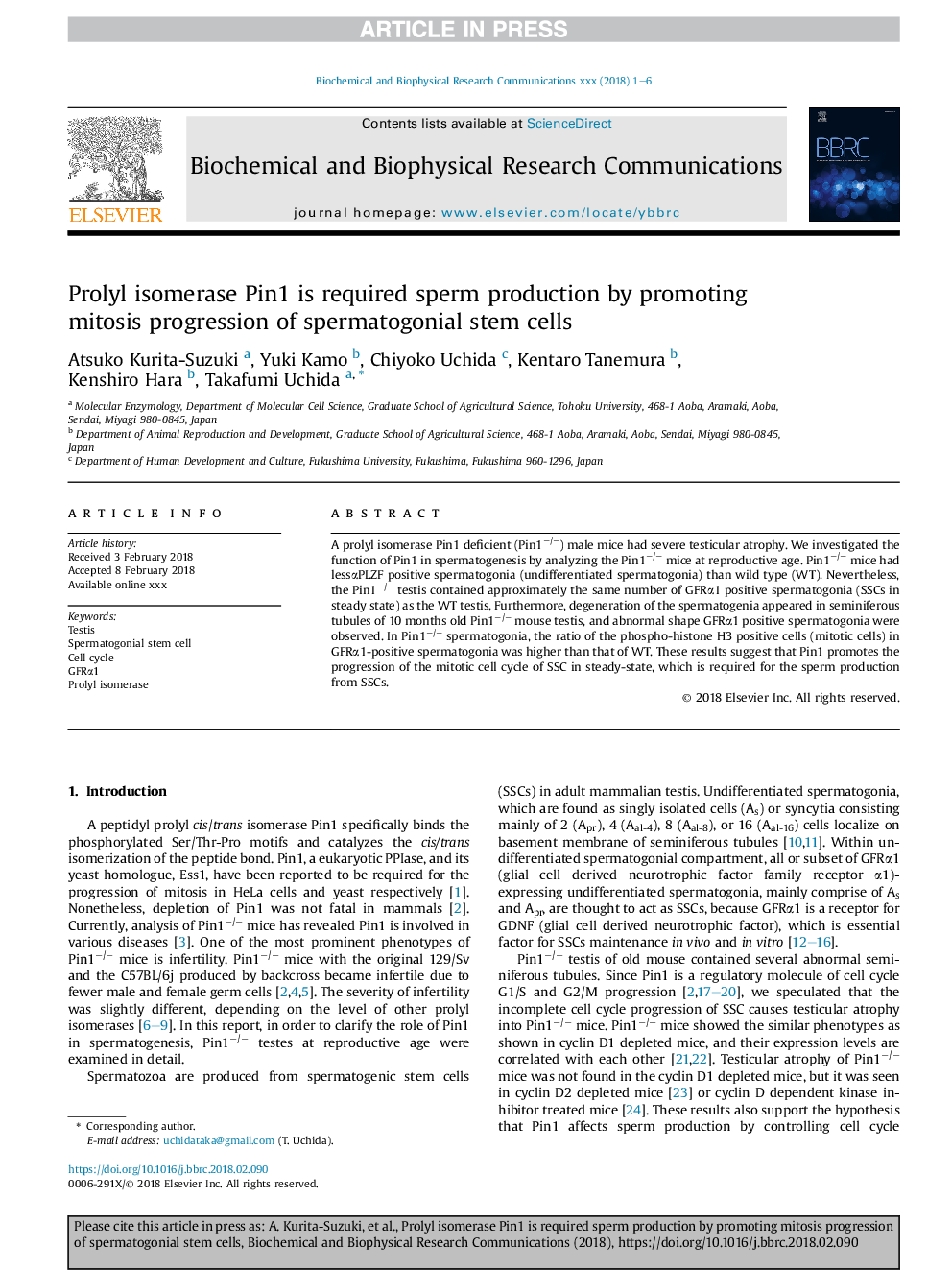| Article ID | Journal | Published Year | Pages | File Type |
|---|---|---|---|---|
| 8294384 | Biochemical and Biophysical Research Communications | 2018 | 6 Pages |
Abstract
A prolyl isomerase Pin1 deficient (Pin1â/â) male mice had severe testicular atrophy. We investigated the function of Pin1 in spermatogenesis by analyzing the Pin1â/â mice at reproductive age. Pin1â/â mice had lessαPLZF positive spermatogonia (undifferentiated spermatogonia) than wild type (WT). Nevertheless, the Pin1â/â testis contained approximately the same number of GFRα1 positive spermatogonia (SSCs in steady state) as the WT testis. Furthermore, degeneration of the spermatogenia appeared in seminiferous tubules of 10 months old Pin1â/â mouse testis, and abnormal shape GFRα1 positive spermatogonia were observed. In Pin1â/â spermatogonia, the ratio of the phospho-histone H3 positive cells (mitotic cells) in GFRα1-positive spermatogonia was higher than that of WT. These results suggest that Pin1 promotes the progression of the mitotic cell cycle of SSC in steady-state, which is required for the sperm production from SSCs.
Related Topics
Life Sciences
Biochemistry, Genetics and Molecular Biology
Biochemistry
Authors
Atsuko Kurita-Suzuki, Yuki Kamo, Chiyoko Uchida, Kentaro Tanemura, Kenshiro Hara, Takafumi Uchida,
